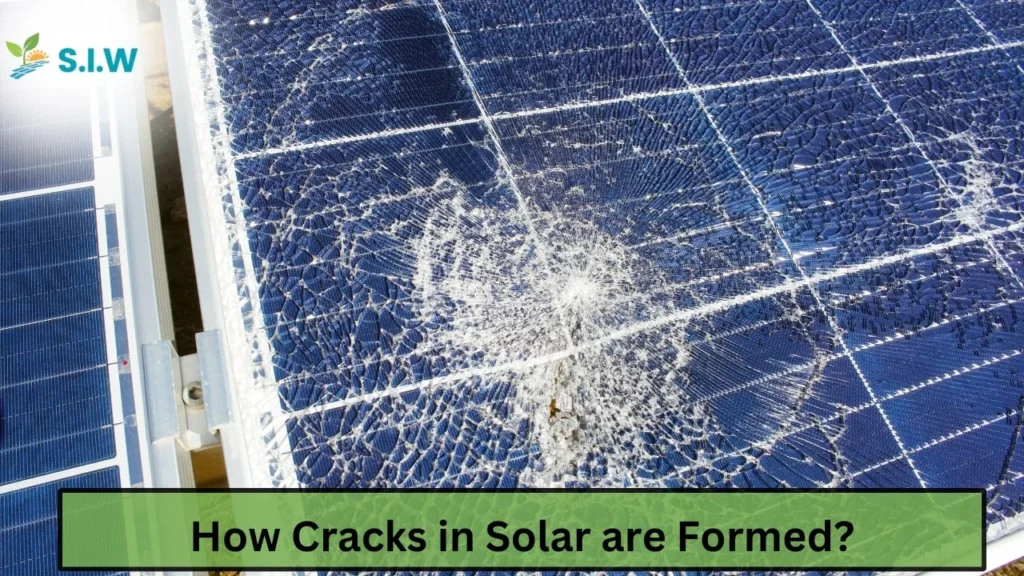When it comes to solar panels, cracks can be a major issue affecting their efficiency and lifespan. But what causes these cracks to form? Understanding the reasons behind them can help prevent damage and keep your solar investment safe. Let’s explore the key reasons cracks form in solar panels and what you can do about it.
Formation of Cracks
Solar panels are designed to be durable and withstand various weather conditions. However, certain factors can cause cracks, which may go unnoticed until they begin affecting performance. Solar panels get damaged for several reasons, and understanding these causes is essential for maintaining your system.
Thermal Stress and Temperature Fluctuations
One of the primary causes of cracks in solar panels is thermal stress. Solar panels are constantly exposed to changing temperatures, from freezing winters to scorching summers. These temperature fluctuations cause the materials in the panels to expand and contract, creating stress on the surface. Over time, this repeated cycle can lead to cracks forming on the solar cells or the glass surface.
Imagine a hot summer day where the solar panels are exposed to intense sunlight, causing them to heat up. If a sudden drop in temperature occurs—like an evening breeze or rain—the quick cooling can cause the panels to contract rapidly, leading to microcracks. These microcracks may not be visible right away but can worsen over time, affecting the efficiency of the panels.
Mechanical Stress from Installation or Weight
Another common cause of solar panel cracks is mechanical stress. This type of damage usually occurs during installation or when heavy objects put pressure on the panels. Poor handling during installation can create stress points, especially if the panels are not mounted securely.
For example, if workers step on a solar panel or place a heavy object on it, even briefly, it can cause tiny cracks. These small damages may not immediately affect the system but can grow larger over time, eventually leading to a loss in performance. Best commercial solar companies are mindful of this and ensure proper installation techniques to avoid unnecessary damage.
Hail and Severe Weather Conditions
Solar panels are built to withstand most weather conditions, but severe storms can still cause damage. Large hailstones, for instance, can strike the surface of the solar panels with enough force to crack the glass. While the cells underneath may still function, a crack in the glass can reduce the efficiency of the system and expose the cells to moisture or dirt.
Additionally, high winds can knock debris onto the panels, causing cracks or scratches. Ensuring that your solar panels are installed securely and are regularly inspected after severe weather can help catch any damage early on.
Manufacturing Defects
Though rare, some solar panels may have defects from the manufacturing process. Poor quality control can result in solar panels that are more prone to cracking over time. Defects in the glass or the solar cells themselves can create weak points that, when exposed to stress or harsh conditions, can lead to cracks.
Working with best commercial solar companies that offer high-quality products and warranties can help mitigate the risk of purchasing faulty solar panels.
Aging and Wear Over Time
Like any technology, solar panels will age and wear out over time. As the materials degrade, they become more susceptible to cracks. The glass surface may become brittle, and the cells may lose their flexibility. While solar panels are designed to last for 25 years or more, regular maintenance and inspections are essential to ensure they continue performing efficiently.
Preventing Cracks in Solar Panels
Now that we understand the key reasons behind solar panel cracks, let’s look at some preventive measures you can take to avoid them.
Regular Maintenance and Inspections
Performing regular maintenance on your solar system can help you catch potential issues early. Scheduling inspections, especially after severe weather, allows you to identify cracks or other damage before it becomes a significant problem.
Proper Installation by Experts
Ensuring that your solar panels are installed by professionals is one of the best ways to avoid cracks caused by mechanical stress. Best commercial solar companies often provide warranties and installation services, so make sure to choose a reputable company for your solar project.
Use Protective Coverings
In areas prone to hail or other extreme weather, using protective coverings can help shield your panels from impact. These coverings can reduce the risk of cracks forming during a storm while still allowing sunlight to pass through efficiently.
FAQs
1. How can I tell if my solar panel has a crack?
You may notice a drop in energy production or visible damage on the surface. Scheduling regular inspections is the best way to detect cracks.
2. Do microcracks in solar panels affect performance?
Yes, microcracks can reduce the efficiency of your solar panels over time, even if they aren’t immediately visible.
3. Can hail damage solar panels?
Yes, large hailstones can crack the glass surface of solar panels, reducing their performance and potentially exposing the cells to further damage.
4. What should I do if my solar panel has a crack?
Contact your installer or a professional for an inspection. In some cases, repairs or replacements may be necessary.
5. Can manufacturing defects cause cracks in solar panels?
Yes, though rare, defects from the manufacturing process can result in weaker panels that are more susceptible to cracking over time.








